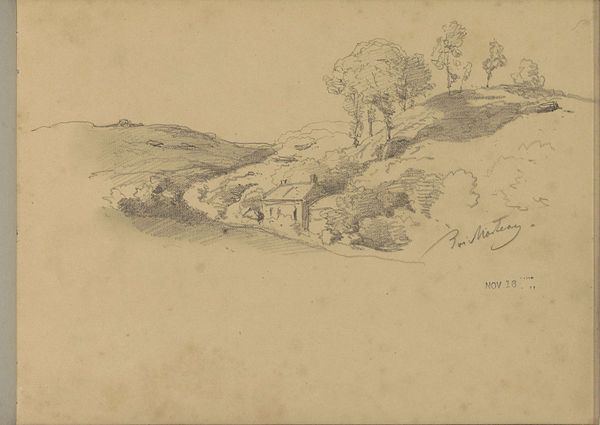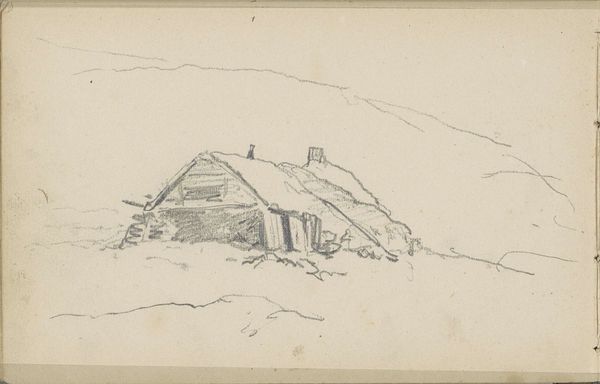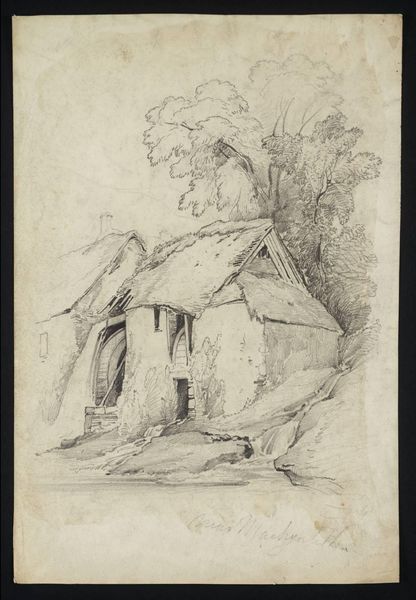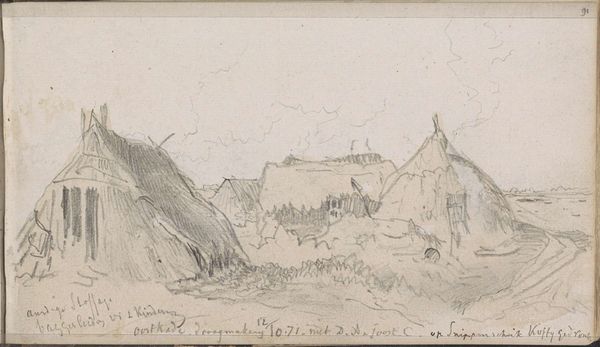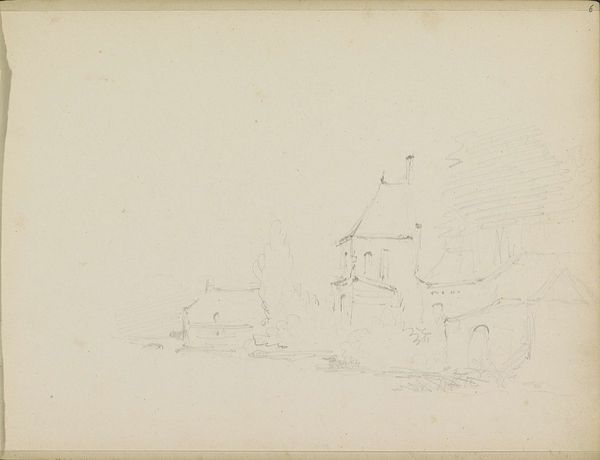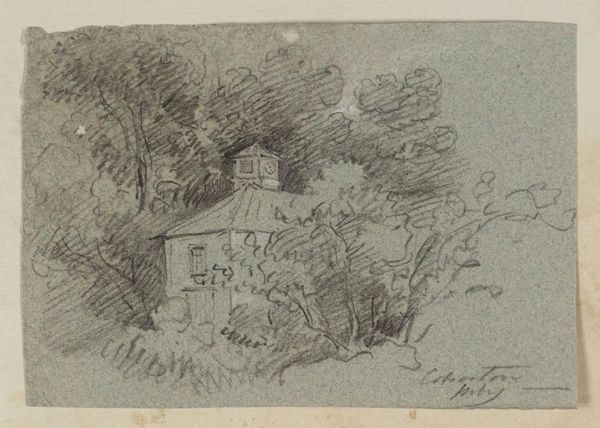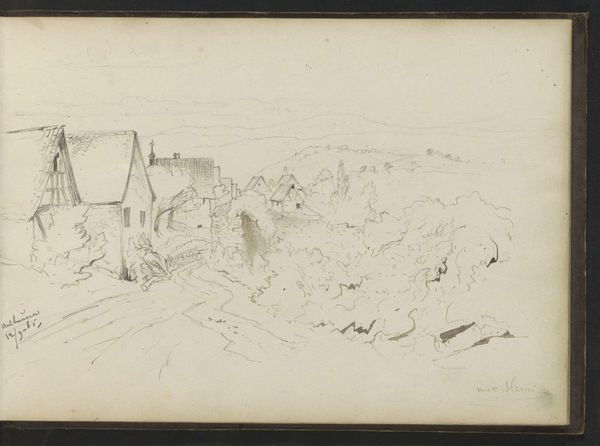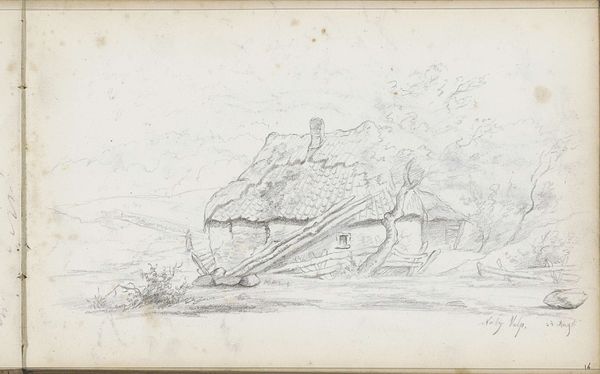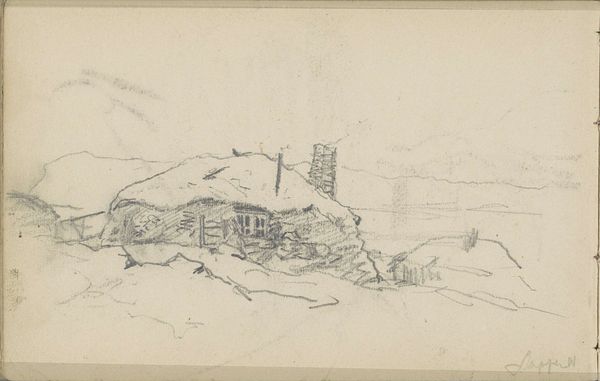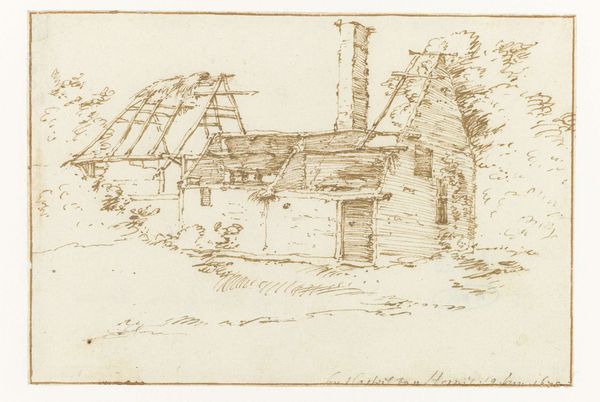
drawing, pencil
#
drawing
#
pencil sketch
#
landscape
#
folk-art
#
pencil
#
realism
Copyright: Rijks Museum: Open Domain
Editor: Here we have "Farmhouse with Figure at Bois Marteau" by Willem Roelofs, dating from around 1846 to 1851. It's a delicate pencil drawing. There’s almost a wistful, transient feeling to it – like a fleeting glimpse of rural life. What aspects of this work particularly resonate with you? Curator: It's precisely that perceived ‘fleeting glimpse’ that I find intriguing. Roelofs captures a romanticized view of rural life that was very popular at the time, yet it masks the socio-economic realities faced by peasants. This work becomes a point of departure for considering class, land ownership, and the idealization of peasantry within a rapidly industrializing society. Do you see that single figure? Editor: Yes, by the cottage, slightly obscured. Curator: Consider their placement. Are they an active participant or simply a picturesque addition to the landscape? Is Roelofs celebrating or subtly erasing their lived experiences by assimilating them into the scenery? These are the questions we should ask when engaging with landscape art of this period. We must consider how power structures shaped what—and who—gets depicted. Editor: That’s a compelling point. I hadn't considered the inherent power dynamics at play. Curator: Furthermore, reflect on the very medium, pencil. What does its accessibility say about the potential democratization of art at the time, and how does this image reinforce or challenge preconceived notions of class identity? Editor: I see. Looking beyond the surface beauty opens up so many crucial discussions. Thanks for shedding light on this, I definitely see it in a new light. Curator: My pleasure! Art offers these silent, potent entry points into understanding complex societal narratives.
Comments
No comments
Be the first to comment and join the conversation on the ultimate creative platform.
